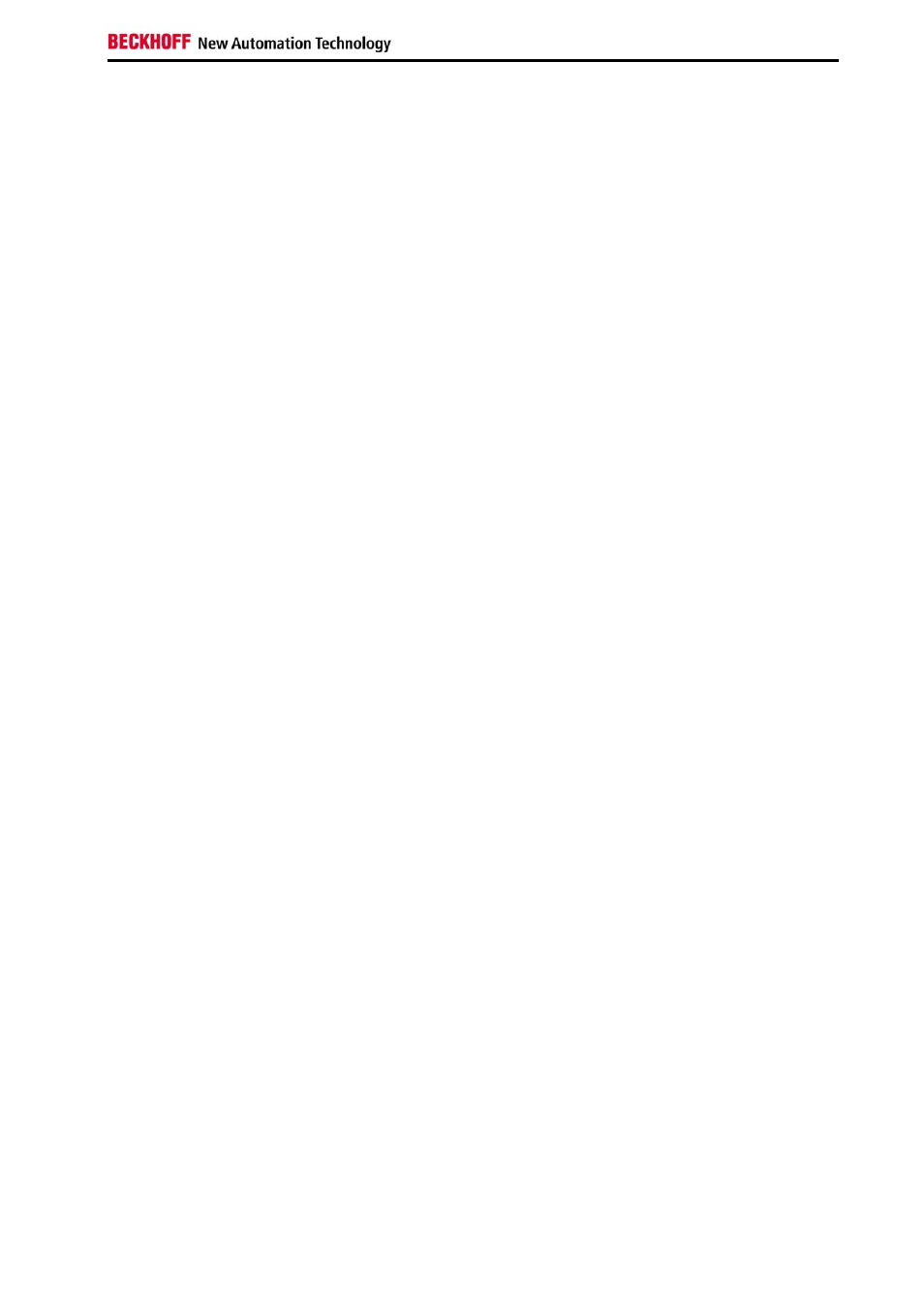Technische daten, Approvals for usa and canada, Fcc: canadian notice – BECKHOFF CU8810-0000 Benutzerhandbuch
Seite 19

Anhang
CU8810-0000
17
Technische Daten
Anzahl der Ports
USB Typ B Ports (downstream): 1
USB –Extender-Rx Ports (RJ45): 4
DVI-Eingänge: 2
DVI-Ausgänge: 4
Unterstützter Standard
USB 1.1
Übertragungsraten
12 Mbit (Full Speed), 1,5 Mbit (Low Speed)
Statusanzeige
12 LEDs
Kabellänge USB-
Erweiterung
maximal 50 Meter
USB Kabellänge
maximal 1 Meter
Stromversorgung
24 V
DC
(-15% to +20%) Netzteil mit Verpolungsschutz.
Um den UL-Richtlinien zu genügen, muss eine 4 A-Sicherung oder ein
Netzteil der Klasse 2 eingesetzt werden!
Leistungsaufnahme
Maximal 2,7 W
Max. Eingangsstrom über
5 V USB
Maximal 0 mA bei 5V
DC
Ausgangsstrom über
USB/E
Maximal 500 mA bei 15V
DC
Während des Betriebs müssen folgende Bedingungen eingehalten
werden:
Umgebungsbedingungen
Umgebungstemperatur:
0 bis 55°C (Betrieb)
-25°C bis +70°C (Transport/ Lagerung)
Luftfeuchtigkeit:
Maximal 95% nicht kondensierend
Erschütterungsfestigkeit
EN 60068-2-6 / EN 60068-2-27
EMV-Verträglichkeit
EN 60000-6-2 / EN 60000-6-4
Schutzart
IP20
Den CU8810 nicht im Ex-
Bereich einsetzen
Der DVI-Splitter darf nicht im Ex-Bereich eingesetzt werden.
Abmessungen (B x H x T)
ca. 146mm x 100mm x 42mm (mit Hutschienenbefestigung)
Gewicht
ca. 580 g
Einbau
auf 35 mm Hutschiene entsprechend EN 50022
Einbaulage
beliebig
Freigaben
CE
Approvals for USA and Canada
FCC: Federal Communications Commission
Radio Frequency Interference Statement
FCC Approval for USA
This equipment has been tested and found to comply with the limits for a Class A
digital device, pursuant to Part 15 of the FCC Rules. These limits are designed to
provide reasonable protection against harmful interference when the equipment is
operated in a commercial environment. This equipment generates, uses, and can
radiate radio frequency energy and, if not installed and used in accordance with the
instruction manual, may cause harmful interference to radio communications.
Operation of this equipment in a residential area is likely to cause harmful
interference in which case the user will be required to correct the interference at his
own expense.
FCC: Canadian Notice
FCC Approval for Canada
This equipment does not exceed the Class A limits for radiated emissions as
described in the Radio Interference Regulations of the Canadian Department of
Communications.